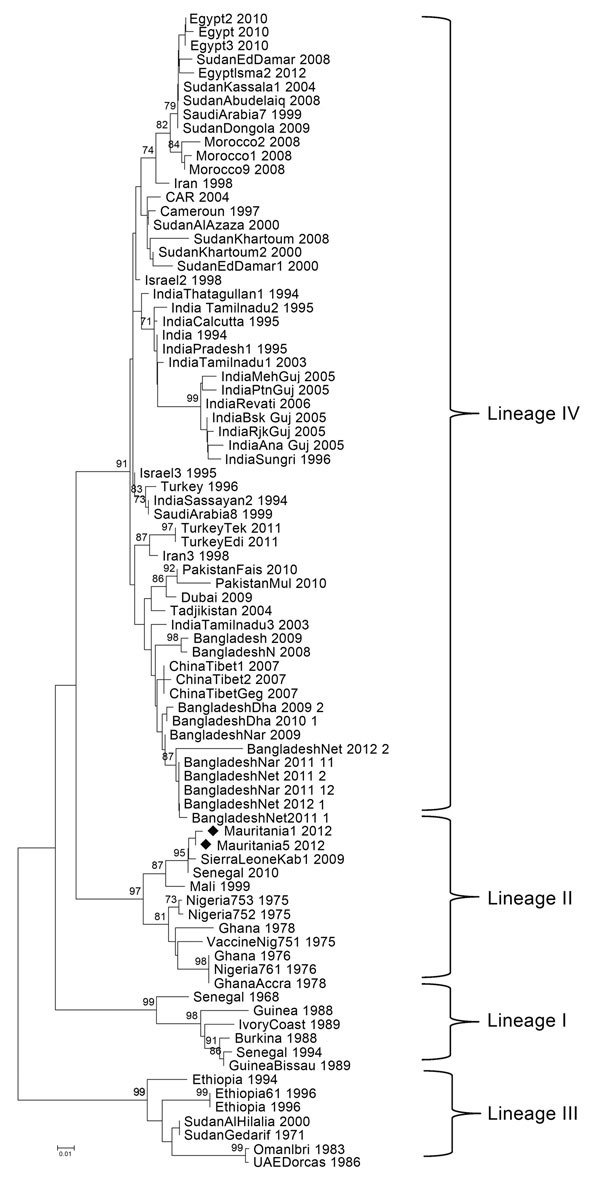Volume 20, Number 2—February 2014
Letter
Peste des Petits Ruminants Virus, Mauritania
Figure

Figure. . . Phylogenetic tree based on the nucleoprotein gene of peste des petits ruminants viruses identified in Mauritania (black diamonds) and selected comparison sequences from GenBank. The neighbor-joining method was used for phylogenetic analysis; evolutionary distances were computed by using the Tamura 3-parameter method and a gamma distribution parameter with a value of 4 (9). CAR, Central African Republic; Nig, Nigeria; UAE, United Arab Emirates. Scale bar indicates nucleotide substitutions per site.
Page created: January 08, 2014
Page updated: January 08, 2014
Page reviewed: January 08, 2014
The conclusions, findings, and opinions expressed by authors contributing to this journal do not necessarily reflect the official position of the U.S. Department of Health and Human Services, the Public Health Service, the Centers for Disease Control and Prevention, or the authors' affiliated institutions. Use of trade names is for identification only and does not imply endorsement by any of the groups named above.